You are here
Natural Ways to Treat and Prevent Tennis Elbow, Golfer's Elbow, and Chronic Wrist Pain
Being a chiropractor, acupuncturist, and a certified tennis nut, over the years, I've found that a few specific stretches, massaging techniques, and strengthening exercises can reduce risk of elbow and wrist injuries. Most of the top pros bring their own physios with them on the road to do some of this work for them, but it's easily done on your own with some know-how.
Most of the muscles that make up the front and back of your forearms originate as tendons that are firmly embedded in a portion of bone in your elbow region. These tendons become muscles that span most of the length of your forearms, and in your wrist area, these muscles transition back to being tendons, which insert into one of the bones that make up your wrist and hand.
Every time you flex or extend your wrist, these forearm muscles contract or stretch, putting stress on their origin and insertion points in your elbow and wrist areas.
Regular court time and off-court resistance work can improve the strength of your forearm muscles and tendons and how much load they can bear. But if fatigue, gross overuse, or even one horrendous mis-hit create more stress on one or more of these tendons than they can handle, you will experience pain and inflammation - pain to prevent you from further exerting yourself and possibly worsening the injury, and inflammation to repair micro or macro tears.
This is why, by the way, you shouldn't take acetaminophen (Tylenol) to manage physical injuries. Acetaminophen blocks your brain's perception of pain, so while you might feel fine playing through an injury with a couple of tablets coursing through your bloodstream, you may worsen your injury without knowing it. If you absolutely need some help with pain management, your best choice is ibuprofen (Advil), which actually reduces inflammation throughout your body without changing your brain's awareness of what's going on.
Getting back to your forearm muscles, if you regularly stretch and massage this area, you can help increase the load that they and their tendons can bear. When muscles are tight, their tendons face more load with every groundie, volley, serve, and smash. Of every tennis-related elbow or wrist injury that I've encountered, I can't think of a single case where the player didn't have significant shortening of his or her forearm muscles on the flexor or extensor sides.
How to Treat and Prevent Tennis Elbow
Tennis elbow refers to inflammation of the tendons that attach to the outside or lateral part of the elbow.
The tendons that attach to this region are the ends of your forearm extensors, the muscles that line the back of your forearm. If these muscles are tight, some of the burden that they should be shouldering gets shifted to their tendinous ends.
To ensure that your forearm extensors are at healthy lengths, begin with your arm in front of you with your wrist flexed toward the inner portion of your forearm. You should feel a stretch in the muscles that line your outer forearm.
Use the fingers of your opposite hand to apply pressure to your outer forearm muscles. Begin close to your elbow joint. As you alleviate any tightness and tenderness in these muscles, move your fingers down your forearm to work on the entire length of your extensors.
While maintaining firm pressure on your forearm muscles, slowly flex and extend the hand of the forearm that you are working on, like you're turning the handles of a bicycle. Ideally, you want to keep your fingers curled forward, or even maintain a fist. With each forward flex, you should feel tightening of your forearm muscles (under the pads of the fingers of your opposite hand). If there are bundles of tight muscle fibers, you'll likely feel some tenderness with each forward flex. Move your wrist back and forth several times, then move a few inches down your forearm and repeat. Do this until you get close to your wrist and can't feel any muscle fibers.
Even if you don't have elbow pain, stretching and doing pressure work as described above can help keep your wrists, elbows, and the muscles that span between these two joints healthy.
How to Treat and Prevent Golfer's Elbow
Also a common problem for tennis players, golfer's elbow refers to inflammation of the tendons that attach to the inner or medial part of the elbow. While tennis elbow tends to occur right up close to the bony insertion point of the forearm extensor tendons, golfer's elbow tends to occur a little further down from the elbow joint, within the meat of the wrist flexor muscles, approximately two to three finger widths away from the elbow joint (there is often some accompanying inflammation of a large pronator muscle that underlies your forearm flexor muscle bellies).
Everything mentioned above on treating and preventing tennis elbow applies to golfer's elbow. Even if you don't have pain along the inner part of your elbow, by stretching and doing pressure work on your wrist flexor muscles, you can reduce your risk of experiencing problems in your wrist and elbow.
Begin standing close to a door or window frame - anything sturdy that can support your weight - with your arm straight out in front of you, palm up.
Now lean into the window or door frame, and allow your hand to bend down toward the ground with your palm in full contact with the surface that you're leaning against.
You should feel an immediate stretch in your wrist flexors, most likely right up around the front, inner portion of your elbow. If you can't bend your hand enough to allow your palm to fully contact the window frame, just go as far as is comfortable. Maintain this stretch for as long as you'd like - about 30 seconds at a time can provide an effective stretch of the muscles and tendons that flex your wrist.
To amplify this stretch, try moving your hand up the window frame in increments - the higher you go, the greater the stretch of your wrist flexors. Just do what you can comfortably tolerate, and don't forget to breathe steadily.
To further ensure that there is no lingering hypertonicity of your wrist flexors, go back to the first position where your palm is against the window frame and your arm is parallel to the floor, then use the thumb of your opposite hand to apply pressure to your wrist flexor muscles. Here, you don't need to move your wrist back and forth into flexion and extension; I've found that it's best just to keep it extended to maintain constant tension on your wrist flexor muscles, and then to do pressure work while these tissues are under tension.
Just like you did with your wrist extensors, you can move your thumb down the length of your wrist flexors while these muscles are being stretched by the window frame.
Please note that pressure work on the muscles noted above will likely lead to stimulation of powerful acupressure points located near your elbow. The blood vessels and nerves that travel through these acupressure points are critical to delivering optimal blood supply and nerve tone to and from your upper extremities, so gentle pressure work as illustrated above can lead to multiple health benefits.
By applying direct stimulation to vessels and nerves, you can actually encourage them and the tissues that they supply to function at a high level. It's a basic law of life: lack of use leads to atrophy, while sensible use and stimulation of tissues invigorates them.
Even if you don't have wrist, forearm, or elbow pain, I encourage you to give these simple exercises a try - they're fine tools in any program of wellness, and priceless to the serious professional or recreational player.
When you are free of pain in your elbow region, I highly recommend that you try the eccentric strengthening exercises described in the video above. In my experience, they are far more effective than conventional concentric contractions in building up functional strength in the common extensor and common flexor tendons that insert into the elbow region.
Note: It's always prudent to consult with your personal physician before you try any self health care measure, including acupressure, intense stretching, and strengthening exercises.
Join more than 80,000 readers worldwide who receive Dr. Ben Kim's free newsletter
Receive simple suggestions to measurably improve your health and mobility, plus alerts on specials and giveaways at our catalogue
Please Rate This
Highest Rated | Related Posts | ||







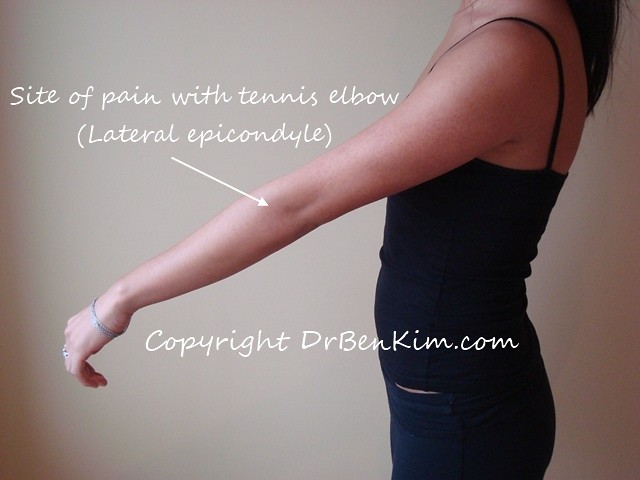

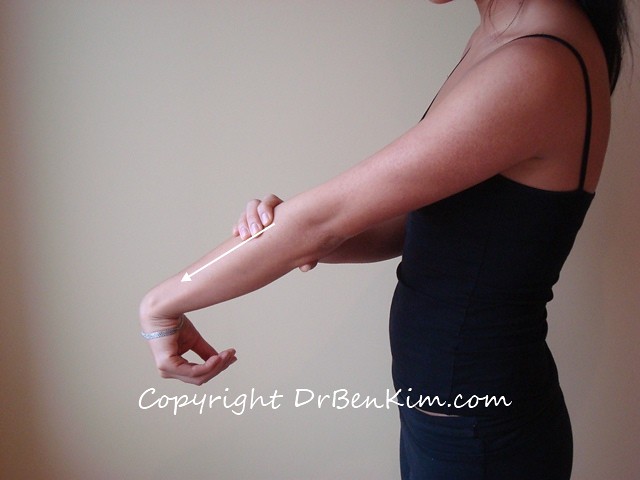
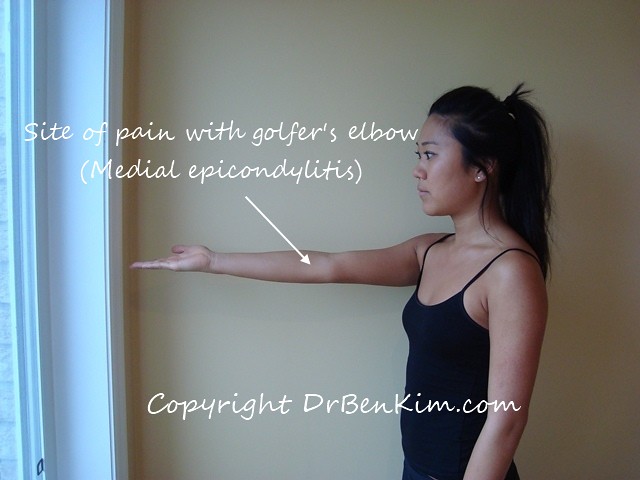


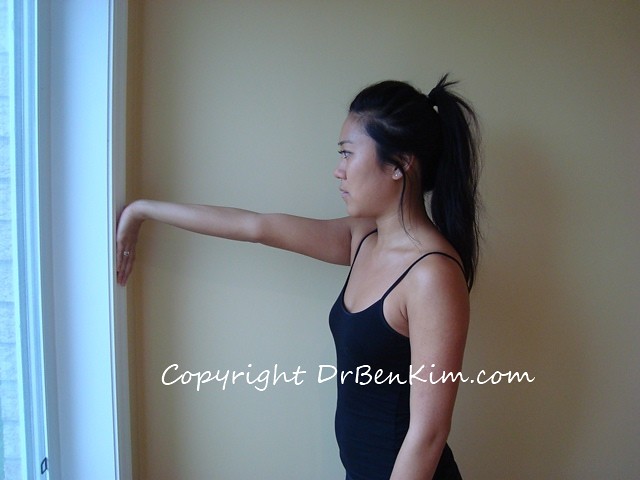
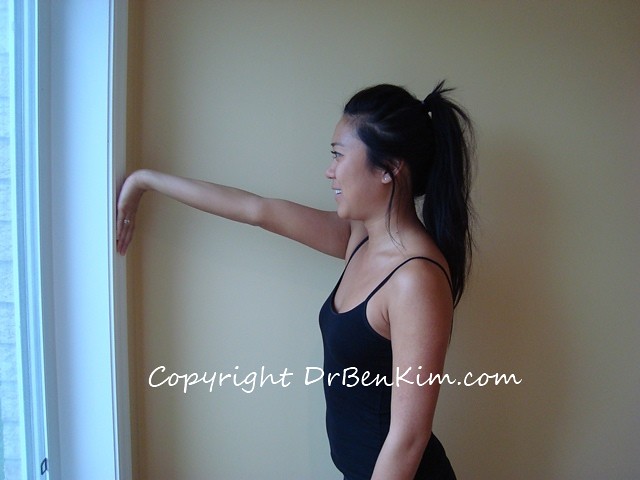
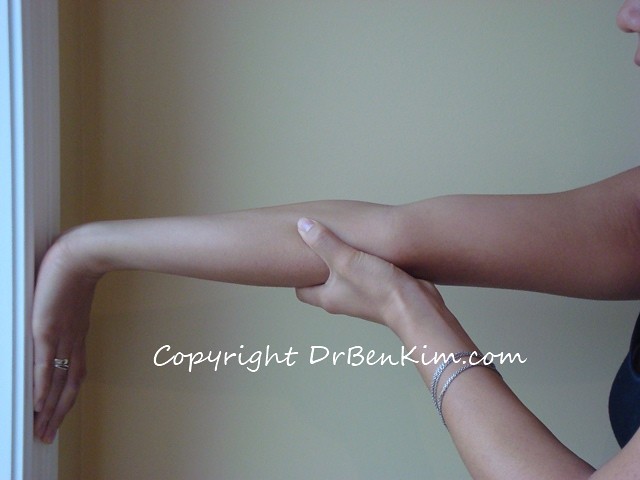
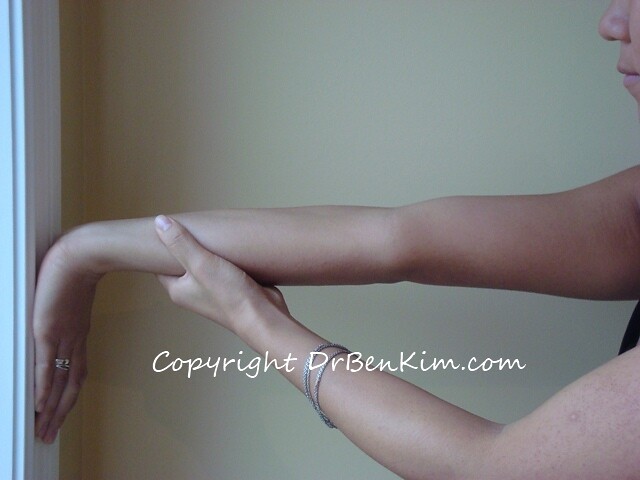




Comments
Love this exercise! I have
Love this exercise! I have old injuries up and down my right arm and this keeps my arm flexible with its full range of motion. In fact, these exercises are actually great for my neck!
I'd love to learn more about the meridians; when you call a point Large Intestine 10, does that mean it also affects the large intestine? I hope to read more about pressure points and meridians. Your bone and calcium supplement is excellent by the way :)
Wrist exercises
Very timely help for an aging tennis enthusiast with wrist extensor issues. The professional advice I received to deal with a painful wrist is 'stop doing the activity that is causing pain'! I can't put my rackets away and have been working on wrist flexibility and strengthening exercises similar to those wonderfully illustrated in your article. This piece has supplemented the routine I have been working with and I hope it will lead to being able to play pain free or at least relatively so!
Incidently, good backhand form displayed Dr. Ben!
Very timely!
I have been experiencing pain in my elbow, for a few months now, as you described in your post.
I suspected tennis elbow before I watched a news clip on it. However, they said it was connected to overuse of the wrist then gave no real recovery suggestions aside from avoiding the activities that aggravated it. Your post now gives me real exercises to use.
I have been finding that all sorts of worrisome conditions (including some forms of prolapse) are related to the shortening/tightening of muscles or tendons. If you take the time to do stretches and incorporate them into your daily life, you can see improvement. I just hadn't related that concept to my elbow.
I was going to try resting my forearm (as the clip suggested) and also use magnesium chloride subdermally to assist the healing process, but now I will be doing these exercises as well as using the magnesium oil on a regular basis.
Thank you for posting.
Thank you!
Thanks to your article and tips, I now Know I have tennis elbow. It started several months ago with a burning sensation right in the area shown in your picture. I thought something was going on topically and considered seeing a dermatologist! After a few months of that, the pain increased and over the last several months I have extreme weakness (can't even pick up the coffee pot) and pain - no matter if I bend or flex and nothing seemed to help. Top that with no health insurance and I felt stuck. Within 24 hours of reading your article on tennis elbow and doing the exercises and deep massage (thanks to my hubby) - I am so much improved. I wish I remembered how I found you/your site. I am so thankful as you have helped me so much. No reply needed - love your site!
This article was exactly what
This article was exactly what I was looking for! I especially found flexing and extending the wrist while applying pressure. I tried applying pressure using a hard lacrosse ball and my arm is currently pumped full of blood and looking huge! More importantly I can already tell this is going to help alleviate the golfers elbow I've developed from body building and power lifting. I was honestly starting to feel depressed that I was going to have to rest my tendons and take weeks off of training; but it's empowering to find a solution that attacks the true cause of elbow pain and will get me back in the gym asap! Thanks!
Feedback
Thank you for sharing this information :) I experienced a decrease in pain right after following your directions for treating Golfer's elbow.
Much appreciated.
Blessed results
I've been having trouble with elbow tendinitis although I am far from being either a golfer or tennis player. It just happens I work all day on a computer and use a mouse... That plus maybe some mistake in exercising got me into a 6 months pain cycle, with 2 sets of steroid + analgesic shots at both wrist and elbow. The therapy plus shots worked their wonder and foe a period of time I improved. But the elbow pain came back and even rides up and down compromising recovered wrist use and some upper arm muscle close to elbow. I kept doing therapy exercise with a squeeze ball, but to be honest I didn't see much improvement since the shots, rather more pain, although not quite as bad as when I first went to the doctor and got the shots.
Today I did the exercises you show here and I just couldn't believe the relief of pain I felt after it. I will keep on doing them for sure. Is there anything else or anything different I should add to deal with the upper arm pain around elbow? Thank you so much for posting your exercises, I truly believe they will help me out over this pain.
elbow tendonitis
Dr.Kim, I am enthused to give your two exercises a try. Have had a strong, burning sensation plus localized pain for many months, probably a couple of years. I am a classical pianist and have been "down in the dumps" over this problem - actually stopped playing and giving performances. I suspect what started this problem (after reading your article) was 'tossing my 6 year old granddaughter up in the air! Just didn't occur to me that such activity might be causing injury. It will be difficult to not please the little gal, but obviously now commonsense will needfully put a stop to what she says is her most fun thing to do. So happy to have found these exercises! Thank you.
Supplements
I would be interested in finding out about your supplements . Excellent article thank you
Supplements
Hi Claire,
Thank you for your interest. You can learn more about Dr. Kim's supplements by visiting his online Natural Health Shop here: https://drbenkim.com/sunshop/index.php
We appreciate you!
Sincerely,
Colleen
Client Care Manager
Great help.
Thank you so much for the video and photos to give help to people with golfers elbow and tennis elbow. I am have both of those from too much lifting of my new grandsons. I'm 62 years old. Your help was the most sane advice. Thank you.
Very informative and useful!!
Very informative and useful!!
Excellent Stretch
I was convinced I suffer from "computer elbow" did a search and was thankfully re-directed from the "writing and wellness website" to this page.
Thank you, I did both the stretches for golfer and tennis elbow and are surprised how well these two quick stretches gave immediate relief, I will definitely be doing them regularly.